Published Jul 3, 2012
David Livingston On Directing Star Trek Episodes, Part 2
David Livingston On Directing Star Trek Episodes, Part 2
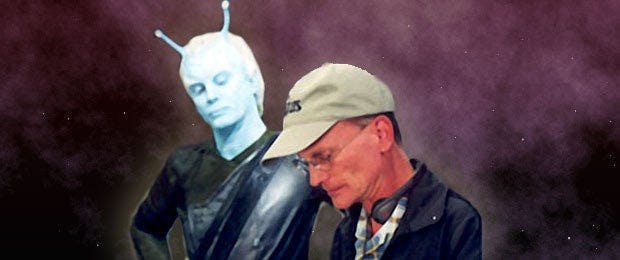
Yesterday, in part one of our extensive conversation with veteran Star Trek director David Livingston, he discussed how he made the leap from unit production manager to producer and from producer to director. He also recounted his two episodes of The Next Generation and his earliest efforts calling the shots on Deep Space Nine. Today, in the second half of our interview, Livingston talks more about DS9, recalls his experiences on Voyager and Enterprise, explains why having the lionfish on TNG named after him wasn’t exactly a tribute, and updates us on his current line of work.
You directed 17 episodes of DS9, including some of its best hours. You did “The Storyteller,” “In the Hands of the Prophets,” “Rules of Acquisition,” “Crossover,” “The Visitor,” “You Are Cordially Invited” and on and on. Which two or three, for whatever reason, stand out most?
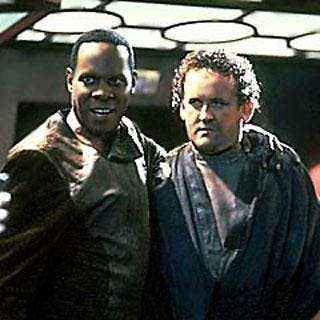
“The Visitor” is regarded as one of the top episodes of the entire series. You weren’t sure you could make that one fly, right?
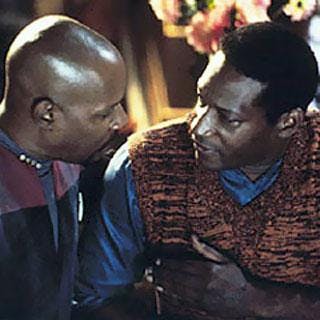
You directed 28 episodes of Voyager, more than you directed of any of the Trek shows. Which episodes do you remember most fondly, and why?

How about “Flashback,” the anniversary episode, or “The Killing Game,” with the Hirogen Nazi?
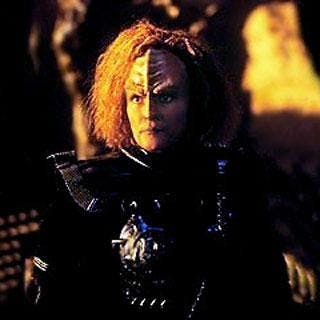
Let’s switch to Enterprise. We think we know what you’re going to say, which is that you liked the breaking-the-mold episodes best. Would that be accurate?
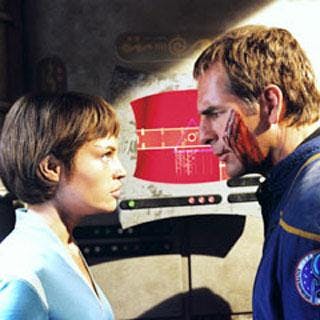
Also, I’d tend to shoot my episodes and my minutes to page count would be really fast. Inevitably, my shows would come in short and we’d have to go in and shoot something second-unit to make enough time for the episode. They didn’t quite know what to do at the end of “Impulse” and I sketched out a whole shot-by-shot thing for the end of the episode, and they bought it. The end of it is T’Pol having this nightmare, and it was very cool to be able to add that on. It doesn’t feel like it’s added on. It actually feels like it’s important, like it’s a part of that episode. So for all of those reasons, I was the most pleased with and had the most fun on “Impulse.”
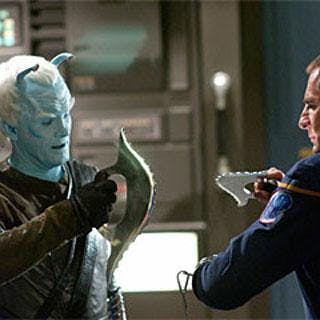
Enterprise only ran four seasons. Did you know, by the time you directed the fourth-season episode “United,” that Enterprise was not going to be be picked up by UPN for a fifth year?
Livingston: Oh, we all knew it was done. In fact, my assumption was that, going into the fourth season, everybody knew that was it. I remember walking off the set of “United” after, again, doing some second unit to fill it out, and thinking, “That’s it. This is over with.” I had this tremendous sense of ennui and I guess I was a little depressed walking out of the stage that day saying, “It’s over. It’s been a great run, but that’s the last Star Trek shot I’m going to do.”
Of your 62 Trek episodes, what one or two would you not change a bit and what might you erase from existence?
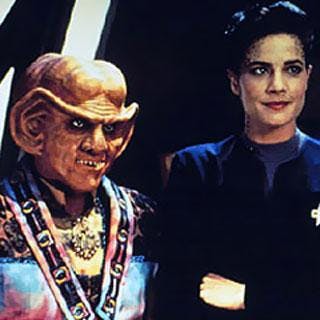
What do you see as your biggest contribution to Star Trek?
Livingston: Mike Westmore. As a production manager, I hired Mike. He’s the guy who, week after week, created the makeup for the series. That seems pretty specific as an answer. You were probably expecting something different. But that was a pretty good move on my part.
We’ve got just a few more questions. First, how did the lionfish in Picard’s ready room come to be called Livingston?
Livingston: Well, it was an insult. Herman Zimmerman named it Livingston. This is what I understand. I don’t know if it’s apocryphal or not. But it’s because of my reputation as the production manager on the show, because the fish ate other fish. So it was a reflection on my temperament as a production manager. It’s a funny knock. It’s one I’m flattered by. That’s my understanding. I don’t even know if it’s true, but that’s what I was always led to believe, that Herman decided to name the fish after me and it was because I ate all the other fish.
You’ll be in Las Vegas next month at the Creation Entertainment Official Star Trek Convention. How often have you done conventions and what do you like about the experience of meeting Trek fans?
Livingston: I’ve only done one other convention. It was in Spokane, and it was a kick. The passion of the people who were there and the knowledge they had, which was infinitely more than my knowledge, was amazing. It was scary. I was embarrassed that I didn’t know or didn’t remember a lot of the stuff they were talking about. These people, it’s almost like a religion to them. It’s the sacred and the profane. The people so believe in and are so passionate about the vision that Gene Roddenberry gave to them, of humanity having a shot at it. These people have a positive view of the future and they’re able to feel a part of something and dress up in funny costumes and have fun. That was a wonderful, wonderful experience. Everybody who’s there, they want to be there. It’s a shared experience. And that’s why I’m looking forward to Creation’s show in Vegas. I was really quite honored that they said, “David, come on and do one of these.” So I’m really looking forward to going and to latching onto that feeling again.
It’s been a while since you’ve directed. What are you doing these days?
Livingston: Directing slowed down and I started to look around for other things to do. I got into still photography. I bought a digital camera about seven or eight years ago. Like I mentioned, I live below the Hollywood sign. So I did a series of pictures of the sign, photoshopped them real heavily, and then had a couple of exhibits. I went to UCLA for several photograph classes. Then I thought, “How can I monetize this?” Somebody in one of my classes suggested that I start to shoot for a throwaway newspaper in the Valley, for free, to get experience shooting red-carpet events. I thought, “I’ll go out and see what that’s like.” I did that for a while, but still had to figure out how to monetize it. Finally, I got hired by an agency called WENN, here in L.A., and I shot for them for nine months. Then I interviewed with Getty Images and they hired me as a freelancer, and I’ve been with them ever since. So I shoot all kinds of events, movie events, TV events, music events.
Click HERE to read part one of our interview with David Livingson.
